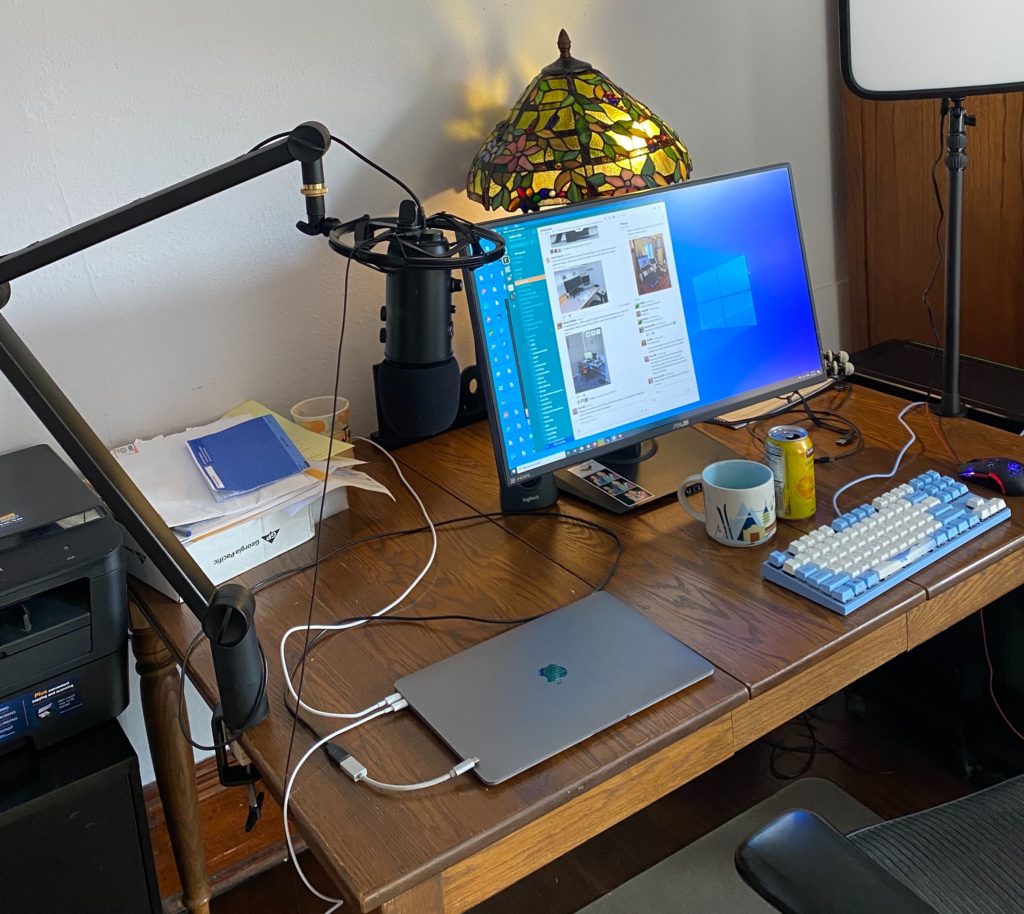Your Podcast Sounds Bad Unless You Do These Hundred Simple Tricks
How We Make Mobycast - Part 1
When Chris Hickman and I, Jon Christensen, first started making Mobycast, the whole idea was that podcasting was easy! It’s easier than blogging! We convinced ourselves of this since Chris and I were busy running a software consulting company and totally didn’t have time to write well-researched, longform blog entries every week.
Two years into it, there’s a lot of detail and good information that we can share with the podcasting world, so I’m going to do some writing afterall. This will be a blog series on how we make Mobycast that covers every detail of the process from recording to production to marketing that will help other tech podcasters (and non-tech podcasters) skip the mistakes we made.
There’s a tl;tr, though, that you should know. Podcasting is NOT easier than blogging. It’s more time consuming … more work. But, in my — correct — opinion, it is sigNIFicantly more fun!
In this first entry, I’m going to talk about the recording equipment we use and how we’ve set up our space to obtain the best sound quality possible without having professional studios. That sounds boring, right? Sure if you don’t mind sounding so bad on your podcast that people’s ears bleed and they drive off highways or vacuum over small children while listening.
Our Mics
First you should know that Chris and I do not record together. He’s on the outskirts of Seattle and I’m in the mountains of Colorado. So we each have different rooms with their own acoustics that we have to account for.
In the beginning we didn’t think about it much. We knew we needed mics. We knew at least that recording straight onto a phone or into a laptop speaker was going to sound awful, so we decided to buy mics.
If you do a quick bit of research on the internet, you’ll often end up with the Blue Yeti as the most popular and well-liked mic for new podcasters out there. We both still use this mic, but I would say it has more features than what we needed and also isn’t the best quality for our particular situation. We might have been able to achieve higher quality sound for around the same price while sacrificing some of those features. What features? Things like settings to record a room full of people or two people on either side of a single mic. We knew we always wanted a mic that was good at recording a single person talking right into it in a quiet room. And if we were to do it again, we would have liked to read the descriptions below about directional capability and mic types.
Directional Capability
Directional capability is exactly what it sounds like. If you put a mic into a room and point it in a direction what will it pick up? Just the stuff in front of it? Everything in the whole room? There’s a name for each behavior as follows:
- Omni-directional -These kinds of mics pick up every sound around them and don’t care what direction it’s coming from. Definitely not what podcasters that are sitting at their computers by themselves need.
- Bi-directional– If you’re going to sit across the table from your guest and you want to have one single mic, then one of these is ideal.
- Cardioid – Cardioids pick up sound best that is in front of them and tend to muffle sounds from the sides and back. Podcasters at their desks by themselves definitely want cardioid mics.
- Shotgun – Shotgun mics are better for picking up sounds from a specific direction that are far away. For example, you might attach a shotgun mic to a camera while filming.
So from that we know we want a cardioid mic, but there’s one other thing we should have taken into account, mic types.
Mic Types
There are two main types of mic: condenser and dynamic. This video by Rode (a very popular mic company) describes the difference well.
I think the main takeaway for us, now that we’ve been at it awhile is that if you can’t create a soundproof space and the lawn maintenance team has a tendency to show up outside when you record, a dynamic mic could help with this a little bit. Dynamic mics will pick up more voice and less room noise. If you listen to Mobycast — especially episodes before number 70, you’ll notice we have a lot of room noise. Gus the dog, squeaky chairs, tapping fingers, ringing doorbells, the works. But even a perfect mic can record bad sound. So to get the sound just right, we needed to tune our rooms.
Room Tuning
Room tuning? You’re just trying to start or improve the quality of your podcast. This sounds like podcast nerd level 30 type stuff, right? Well it can be, but that’s not what I’m going to write about here. We just realized that the extra *stuff* that you could hear in our show made us sound like amateurs. We wanted to tighten it up, and that meant room tuning. The first thing we both did was to get microphone booms and shock mounts. We used this setup called the Yeticaster which I’d give a solid B+. Based on my earlier comments about the Blue Yeti, if I were to do it again, I wouldn’t buy a bundle like this. Having said that, the boom and shock mount do their job. They help prevent vibrations from the table and chair and floor from getting into the mix. Plus they make my setup look super duper pro.
 No one can see my room now without being like “Dude are you a podcaster?” (with just absolute admiration in their voice and eyes.)
No one can see my room now without being like “Dude are you a podcaster?” (with just absolute admiration in their voice and eyes.)
We didn’t stop at the boom and shock mount, though. Chris noticed that he was talking straight into a glass window pane .That pane reflected his voice right back into the microphone and made his voice sound muddy, so he bought a microphone isolation shield to put his mic into when he records. He wishes he didn’t have to because it takes up a lot of space on his desk and wishes he had a softer room like mine, but despite his best efforts, he wasn’t able to convince his family to move to make it more convenient for him to record a great-sounding Mobycast..
The last thing we did is almost embarrassing to say. It’s so obvious now but we didn’t deal with it for dozens of episodes. We got the dogs out of the room. If you’re trying to sound interesting and engaging, nothing undercuts that more than audible snoring in the recording. Both our early producer Rich and Chris had dogs in the room during recordings and early episodes are full of snoring. It’s just not good audio. Of course, they’re very good dogs.

Last couple equipment notes
In the next installment I’ll get into the software we use and our process for recording, but there are a couple final things to share about our recording equipment. The first thing might be obvious, but I’ll mention that our mics are USB mics that can be plugged directly into a computer. We could use XLR mics but then we’d need some additional equipment to convert the XLR signal into USB. Personally I can’t think of any reason that a podcaster would need to do this. It’s just extra equipment and extra expense and it’s probably better spent on audience growth. Well maybe I can think of ONE reason. If you have a podcast that is literally about making a perfect sounding podcast, then maybe it would be good to go whole hog on the best possible equipment. All other podcasts in the whole world can use USB mics I think.
And then there’s that pesky computer. Make sure that you are using a computer that won’t power on it’s fan during recording. I use a Macbook Air and it doesn’t need the fan running to record. Chris’s macbook pro sometimes does run the fan during recording which is ridiculous since it’s a more powerful machine and I would think it wouldn’t even get out of breath at all for recording but maybe it has to do with just the way the computer is tuned. Another way to ensure that computer fan noise won’t get into the recording is to record onto an iPhone or iPad. I’m going to pretend like Android devices don’t exist.
That wraps up the first installment in how we make Mobycast. Please consider doing these things if you are starting a podcast or if you have a podcast and it needs some love in the sounding-good department.
Update: Part 2 now available!
Session expired
Please log in again. The login page will open in a new tab. After logging in you can close it and return to this page.